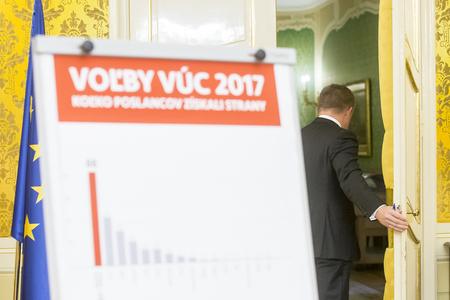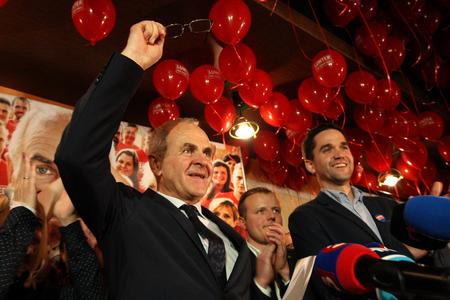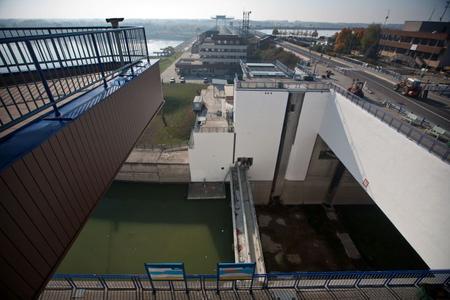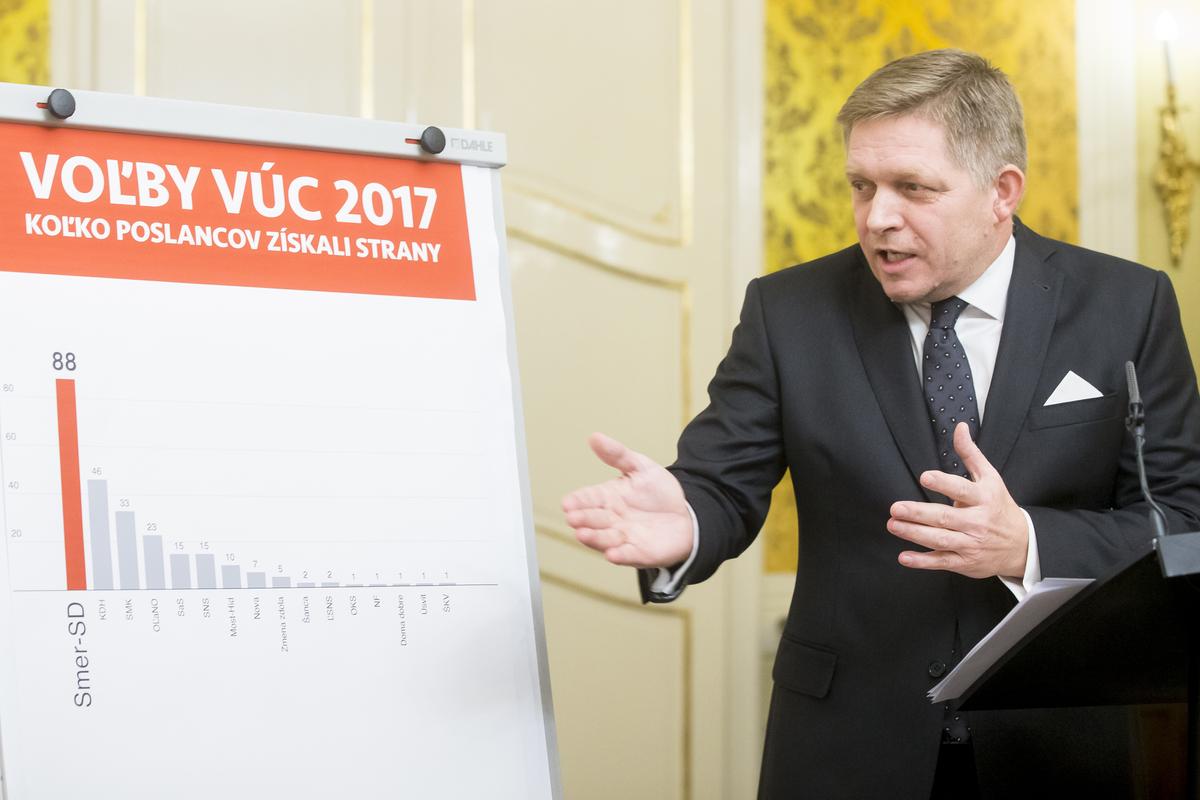During the regional elections four years ago, Smer was at the height of its power. At the time, the party not only controlled Slovakia’s unprecedented one-party government, but also won most of the regional council chairs and six out of eight regional governor posts in 2013. In short, Smer was ruling the country at all levels.
However, the 2017 election results reveal the party has been telling a different story. In the November 4 regional elections, Smer lost four of the six regional governor positions and a considerable portion of chairs in the regional councils - even though it remains the political party with the most regional councillors around the country, as Prime Minister Robert Fico stressed. But his reaction was delayed until almost a week after the elections, leaving a lot of room for speculation about where the party is headed.
“The election results reflect a more general shift of voter sympathy,” political analyst Grigorij Mesežnikov told The Slovak Spectator.
The results of the regional elections confirm a decline in support for the ruling party. There was a similar trend in the parliamentary election: in 2012, Smer received 44.42 percent of the vote, while in 2016 it dropped to 28.28 percent with similar turnout numbers.

Silence from the prime minister
On November 4, Smer lost the majority in the regional parliamentary elections of Trenčín, Prešov and Košice. Many of the chairs in those regions will be taken by independent candidates and candidates from the centre-right parties. In the eight regional governor races, Smer lost four out of the six governor posts it controlled during the previous four years. This also included Košice, where Richard Raši, the incumbent mayor of the regional capital, was a clear favourite but lost to the centre-right candidate. Smer also lost the governor chair in Trnava, Žilina, and Prešov.
Since PM Fico chose not to make a statement on the results immediately after they were released, the media were left with scattered reactions of Smer vice-chairs. Most of those who spoke to the media suggested that personnel changes might be in place following the elections, some even hinting at the scandals that have been linked with the party, potentially harming its reputation among voters.
On November 10, Fico finally stood in front of the cameras and repeatedly stressed that he “would have liked to get more”. However, he insisted the results of Smer were not a loss.
“How could it be a fiasco when a political party wins most councillors among all parties?” Fico asked.
He pointed to the graph he prepared for the occasion showing Smer as the party with the biggest numbers of chairs in regional councils around the country: 88. No other political party won more than that. While this is true, Fico also admitted to excluding the results of independent candidates from his calculations. He argued that the trend of supporting independent candidates “is clear and will grow further.”

Fico also presented rather unorthodox calculations when it came to the election of regional councillors. He included the number of votes received by Ján Lunter of Banská Bystrica (running as an independent with the wide support of political parties across the political spectrum) when breaking down results for the Smer party. He calculated the results into percentages and claimed that Smer received 37 percent of the total votes in the elections.
Subsequently, the prime minister attributed Smer’s inability to elect enough candidates in some regions to the majority election system.
“I take it as a result that reflects the current distribution of political forces.” Fico stressed that, “Smer remains the decisive political force.”
A series of disappointments
There is no doubt Smer remains the largest party in the county by a wide margin, said political analyst Kevin Deegan-Krause from Wayne State University. But if the party’s performance is measured against its past performance and expectations based on that performance, “then certainly this is a disappointment for Smer”.
While regional races can hardly be used as proof of a party’s overall support, Deegan-Krause notes, the party’s most recent loss is the fourth of its kind, spanning over four different types of elections: European, presidential, parliamentary, and now regional.
“But that does not mean it signals the party’s ultimate demise,” Deegan-Krause told The Slovak Spectator.
The voices of the party are opposed to any defeatist rhetoric, too. While the head of the party’s Bratislava regional branch, Martin Glváč, insists it is all about learning from past mistakes and getting rid of “old and burnt-out” candidates, Deputy PM Peter Pellegrini believes the party still has a lot of expert candidates to offer.
“I don’t think the decline of the Smer party has begun as of today,” Pellegrini said on the TA3 news channel the day after the elections.
Hurt by scandals
Has Smer suffered on the regional level because of its own scandals in big politics? The scandals that have recently harmed the party include the Bašternák scandal, involving Interior Minister Robert Kaliňák; the Čistý Deň scandal, involving Labour Minister Milan Richter; and the Gabčíkovo scandal, involving attorney Radomír Bžán and disputes concerning overpriced fees.

Voters undoubtedly see what happens in big politics and to some extent reflect their evaluation of the parties’ politics from the national level to the regional level, political analyst from Comenius University, Pavol Baboš, told The Slovak Spectator.
“But currently, Smer’s reputation is in such a state that it is hard to predict if the resignation of Robert Kaliňák would suffice, and whether the supporters or former supporters of Smer do not require more than that,” Baboš said, suggesting that Smer might need to reconsider the content of its politics.
Some self-reflection
Even though Fico’s reaction does not suggest the party will be considering any ground-breaking changes in its politics or leadership, it does suggest that the top party is not finished evaluating the results of the regional elections. The party leadership met on November 14 for that purpose and will continue to talk about the results at its next meeting.
On November 14, Culture Minister Marek Maďarič, the deputy chairman responsible for campaigning, offered his resignation from the party post.
“I didn’t mention any names, apart from my own, as I offered my resignation from the deputy chair’s post,” the minister wrote in a statement.
Smer’s leadership has not finished discussing the regional elections yet and will continue to do so in subsequent meetings.
“If we in Smer don’t want to continue this [downward] trend, we need to embrace significant changes at various levels – political, programme and personnel-related,” the culture minister said shortly after the elections, as quoted by the TASR newswire.
Tim Haughton from the University of Birmingham deems it “very normal” for parties in power to lose mid-term and second order elections, which is always a challenge.
“Smer is capable of responding to that challenge but it requires a possible change of direction,” Haughton told The Slovak Spectator. “It’s capable of bouncing back but it has to focus on the things that keep parties resilient.”


 “How could it be a fiasco when a political party wins most councillors among all parties?” asks PM Robert Fico. (source: Sme)
“How could it be a fiasco when a political party wins most councillors among all parties?” asks PM Robert Fico. (source: Sme)
 Culture Minister Marek Maďarič (source: SME)
Culture Minister Marek Maďarič (source: SME)